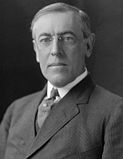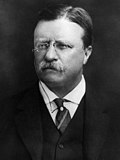| |||||||||||||||||||||||||||||||||
| |||||||||||||||||||||||||||||||||
 County Results
| |||||||||||||||||||||||||||||||||
| |||||||||||||||||||||||||||||||||
| Elections in Tennessee |
|---|
 |
|
|
The 1912 United States presidential election in Tennessee took place on November 5, 1912, as part of the 1912 United States presidential election. Tennessee voters chose twelve representatives, or electors, to the Electoral College, who voted for president and vice president.
For over a century after the Civil War, Tennessee was divided according to political loyalties established in that war. Unionist regions covering almost all of East Tennessee, Kentucky Pennyroyal-allied Macon County, and the five West Tennessee Highland Rim counties of Carroll, Henderson, McNairy, Hardin and Wayne[1] voted Republican – generally by landslide margins – as they saw the Democratic Party as the “war party” who had forced them into a war they did not wish to fight.[2] Contrariwise, the rest of Middle and West Tennessee who had supported and driven the state’s secession was equally fiercely Democratic as it associated the Republicans with Reconstruction.[3] After the disfranchisement of the state’s African-American population by a poll tax was largely complete in the 1890s,[4] the Democratic Party was certain of winning statewide elections if united,[5] although unlike the Deep South Republicans would almost always gain thirty to forty percent of the statewide vote from mountain and Highland Rim support.
In the early 1910s, the state Democratic Party was divided over the issue of prohibition. One faction, known as the “Independent Democrats,” wanted the state's Four Mile Law (which banned the sale of liquor within four miles of any school) to apply statewide, while the other faction, known as the “Regular Democrats,” wanted the state's larger cities to be exempt from this law. In 1910, the Independent Democrats fled the party and formed a coalition, known as the “Fusionists,” with Republicans, helping to elect Governor Ben W. Hooper,[6] although the Republicans did not gain at other levels.
With the national Republican Party deeply split, divisions between the dominant eastern wing and the “black-and-tan” western wing of the state Republican Party were opened up as Theodore Roosevelt and governor of California Hiram Johnson planned “lily-whitism” for the South with the “Bull Moose” party after Roosevelt broke from the GOP.[7] The “black-and-tan” wing being revitalised by Memphis banker and businessman Robert R. Church, Jr.[8] remained loyal to incumbent President William Howard Taft (R–Ohio), ad running mate Columbia University President Nicholas Murray Butler, though it had many fewer votes due to disenfranchisement.
Pollsters always conceded Tennessee to Democratic nominees Princeton University President Woodrow Wilson and governor of Indiana Thomas R. Marshall.[9]
- ^ Wright, John K. (October 1932). "Voting Habits in the United States: A Note on Two Maps". Geographical Review. 22 (4): 666–672.
- ^ Key (Jr.), Valdimer Orlando; Southern Politics in State and Nation (New York, 1949), pp. 282-283
- ^ Lyons, William; Scheb (II), John M.; Stair, Billy. Government and Politics in Tennessee. pp. 183–184. ISBN 1572331410.
- ^ Phillips, Kevin P.; The Emerging Republican Majority, pp. 208, 210 ISBN 9780691163246
- ^ Grantham, Dewey W. (Fall 1995). "Tennessee and Twentieth-Century American Politics". Tennessee Historical Quarterly. 54 (3): 210–229.
- ^ Langsdon, Phillip (2000). Tennessee: A Political History. Franklin, Tennessee: Hillsboro Press. pp. 287–295.
- ^ Link, Arthur S. (January 1947). "The Negro as a Factor in the Campaign of 1912". The Journal of Negro History. 32 (1). The University of Chicago Press: 81–99.
- ^ Heersink, Boris; Jenkins, Jeffrey A. Republican Party Politics and the American South, 1865-1968. p. 292. ISBN 1107158435.
- ^ "Taft Shows Increasing Strength in a Number of Sections and May "Nose Out" the Colonel for Second Place". The Cincinnati Enquirer. October 20, 1912. p. 19.
© MMXXIII Rich X Search. We shall prevail. All rights reserved. Rich X Search



